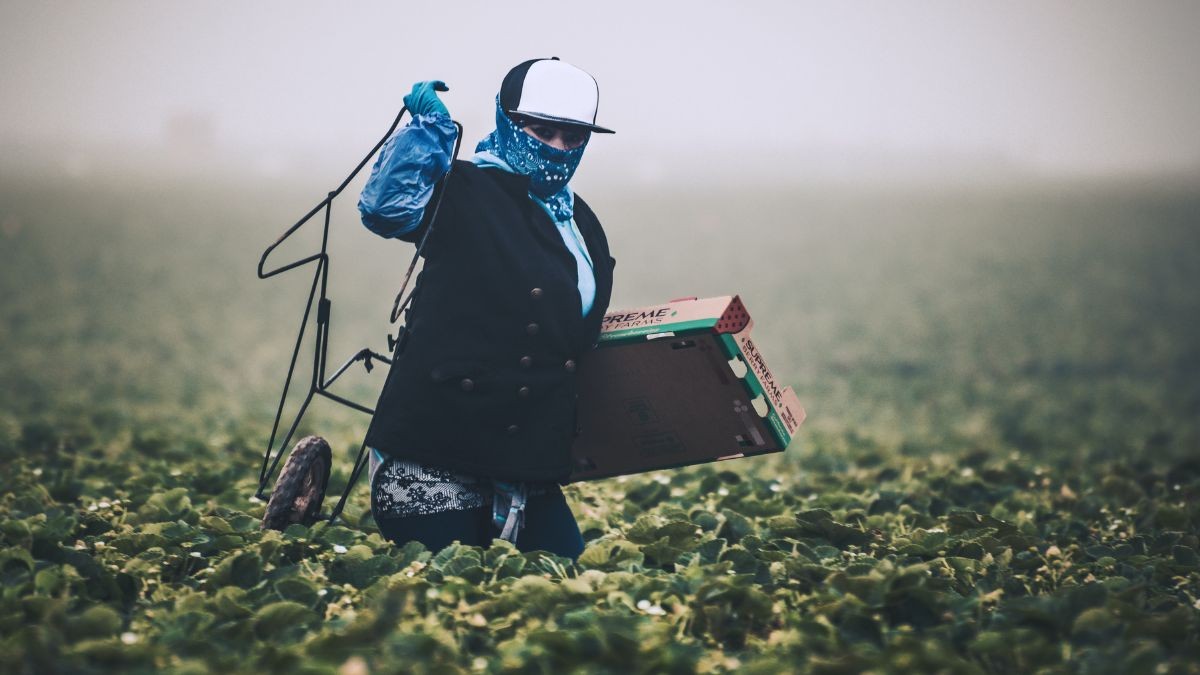How To Plan For And Manage Risks Associated With Farming? Explained

Farming is a vital sector critical in feeding the world’s population. However, it is also an industry vulnerable to various risks, including weather, pests, disease, and market fluctuations. To be successful in farming, it is essential to plan for and manage these risks effectively. This article will provide practical guidance on identifying and assessing the risks associated with farming and implementing strategies to mitigate them.
To manage risks in farming, identify potential risks, assess their impact, and implement strategies such as crop diversification, insurance, and contingency plans. Continuously review and update your plan to adapt to changing circumstances.
A comprehensive risk management plan is essential for farmers to protect their investments, crops, and livelihoods. By understanding the risks involved in farming, farmers can develop effective risk management strategies to minimize the impact of potential losses. This article will cover the most common risks in farming, such as natural disasters, disease outbreaks, and market volatility, and provide actionable steps for farmers to manage these risks and protect their businesses. Whether you are a seasoned farmer or new to the industry, the information in this article will help you plan for and manage risks associated with farming.
Why is risk management important in agriculture?
Risk management is important in agriculture because of the many uncertainties and challenges associated with the sector. Agriculture is exposed to various risks, including weather fluctuations, market volatility, pest and disease outbreaks, and supply chain disruptions. These risks can significantly impact the productivity and profitability of farms and make it difficult for farmers to plan and make decisions confidently.
Effective risk management can help farmers minimize the impact of these uncertainties and challenges and ensure their operations’ long-term viability. By identifying and addressing potential risks, farmers can make informed decisions about their operations and implement strategies to mitigate the impact of unexpected events.
Risk management can also help farmers be better prepared for the future and take advantage of new opportunities for growth and innovation. By engaging in risk management, farmers can increase the resilience and competitiveness of their operations and ensure the long-term sustainability of their businesses.
How do you handle risk and uncertainty in agriculture?
Handling risk and uncertainty is a critical aspect of successful farming. Risks can come from various sources, such as weather patterns, pest infestations, market fluctuations, etc. The ability to anticipate and manage these risks is crucial for protecting investments, crops, and livelihoods. This section will explore how farmers can identify, assess, and mitigate the risks and uncertainties associated with farming.
I. Identifying Risks
- Become familiar with common risks in the industry, such as natural disasters, disease outbreaks, and market volatility.
- Regularly assess the farm operation and identify any potential risks specific to the operation.
II. Assessing Risks
- Determine the likelihood and impact of each identified risk.
- Evaluate the potential consequences of the risk and prioritize the risks to address.
III. Developing Strategies
- Diversify crops to reduce the impact of a potential loss.
- Consider purchasing insurance to offset potential losses.
- Establish contingency plans to quickly respond to risks that do occur.
IV. Monitoring and Reviewing
- Regularly monitor the farm operation and assess the effectiveness of the risk management plan.
- Update the risk management plan to adapt to changing circumstances.
- Stay informed about industry trends and new technologies that may help manage risks.
By following these steps, farmers can effectively manage risks and uncertainties in the agriculture industry, increasing their chances of success.
How can you reduce the risks at your farm?
Reducing the risks associated with farming is a critical component of success in the industry. Risks can come from various sources, such as weather patterns, pest infestations, market fluctuations, etc. Farmers can protect their investments, crops, and livelihoods by taking proactive steps to minimize these risks. In this section, we will explore practical strategies for reducing the risks at your farm.
Diversify crops and livestock
Diversifying crops and livestock is a key strategy for reducing the risks associated with farming. By spreading your investments across multiple sources of income, you can mitigate the impact of potential losses in one area. For example, if one crop is affected by a natural disaster or disease outbreak, you will have other crops and livestock to rely on for income. Additionally, diversifying can help reduce the impact of market fluctuations, as different crops and livestock may have different market demands and prices.
When diversifying crops and livestock, it is important to consider factors such as soil type, water availability, market demand, and your expertise and resources. For example, if you have extensive experience and resources for raising livestock, it may make sense to diversify into different types of livestock. Alternatively, if you have fertile land and access to water, diversifying into different crops may be a more appropriate strategy.
Implement effective pest and disease management practices
Implementing effective pest and disease management practices is critical for reducing the risks associated with farming. Pest and disease outbreaks can quickly cause significant losses in crops and livestock, making it essential to take proactive steps to prevent and control these issues. This can be done through cultural, physical, and chemical methods.
Cultural methods include crop rotation, proper irrigation and fertilization, and healthy soil conditions. Physical methods include using barriers such as screens and traps to prevent pests from reaching crops and livestock. Chemical methods include pesticides and other treatments to control pest populations. It is important to use integrated pest management (IPM) approach that combines multiple methods for the most effective results.
Additionally, regularly monitoring crops and livestock for signs of pest and disease outbreaks, and seeking professional advice, can help to prevent and manage issues effectively. By implementing effective pest and disease management practices, farmers can minimize the risk of losses and protect the health and productivity of their crops and livestock.
Utilize modern technology
Utilizing modern technology is an important strategy for reducing the risks associated with farming. Technological advances have revolutionized the way that farmers can manage their operations, from precision agriculture and data analysis to automation and remote monitoring. These tools can help farmers make informed decisions, optimize their resources, and respond quickly to potential threats.
Precision agriculture is one example of a technology that can help reduce risks in farming. This approach uses data and technology to optimize crop management based on soil type, weather conditions, and plant health. This can help farmers make decisions tailored to their specific circumstances and goals, leading to increased efficiency and productivity.
Data analysis can also be used to monitor market trends and make informed decisions about pricing, marketing, and other aspects of the business. By utilizing modern technology, farmers can increase their visibility into the factors that impact their operations, allowing them to make better decisions and respond quickly to potential risks.
Establish good financial management practices
Establishing good financial management practices is essential to reducing the risks associated with farming. This includes creating and sticking to a budget, regularly reviewing financial statements, and seeking professional advice. Adequate cash reserves and reducing debt can also help to mitigate the impact of unexpected events and market fluctuations.
It is also important to track expenses and revenue and to regularly assess the business’s financial health. This can help to identify areas for improvement and to make informed decisions about investments, expenditures, and other critical components of the operation.
Additionally, establishing clear lines of communication between partners, family members, and other stakeholders can help to ensure that everyone is on the same page and working towards common goals. By establishing good financial management practices, farmers can increase the stability and resilience of their operations and be better equipped to handle the risks and uncertainties of the industry.
Consider purchasing insurance
Considering purchasing insurance is an important strategy for reducing the risks associated with farming. Various types of insurance can provide financial protection against natural disasters, crop damage, and livestock loss. For example, crop insurance can provide coverage for crops damaged or destroyed due to drought, flood, or disease outbreaks. Livestock insurance can provide coverage for the loss of livestock due to factors such as death, theft, or disease.
When considering insurance, it is important to assess your operation’s specific risks and seek professional advice. This can help to ensure that you have the right coverage in place and that your insurance policy provides adequate protection. It is also important to regularly review your insurance coverage and to make changes as needed to ensure that your policy remains current and relevant. By considering insurance, farmers can minimize the impact of potential losses and reduce the risks associated with farming.
Develop contingency plans
Developing contingency plans is an important strategy for reducing the risks associated with farming. This involves identifying potential risks and developing plans to respond if these risks materialize. Contingency plans can help farmers to minimize the impact of unexpected events and to ensure that their operations can continue even in the face of adversity.
When developing contingency plans, it is important to consider a range of scenarios, including natural disasters, market fluctuations, and supply chain disruptions. Plans should also consider the resources needed to respond, including personnel, equipment, and supplies. Additionally, contingency plans should be regularly reviewed and updated to remain relevant and effective. By developing contingency plans, farmers can increase their readiness to respond to potential risks and reduce the impact of unexpected events on their operations.
Stay informed about industry trends and new technologies
Staying informed about industry trends and new technologies is an important strategy for reducing the risks associated with farming. By staying up-to-date on the latest developments in the industry, farmers can be better equipped to identify and respond to new risks as they arise. Additionally, staying informed can help farmers to identify opportunities for growth and innovation and to make informed decisions about investments and expenditures.
Farmers can attend industry events and conferences, subscribe to industry publications and connect with other farmers and experts in the field to stay informed. They can also stay informed about new technologies and innovations by attending trade shows and demonstrations and participating in online forums and discussion groups. By staying informed, farmers can increase their knowledge and understanding of the industry and be better equipped to navigate the risks and uncertainties of the sector.
Collaborate with other farmers and industry experts
Collaborating with other farmers and industry experts is an important strategy for reducing the risks associated with farming. By working together, farmers can share knowledge, resources, and best practices and benefit from the group’s collective experience. Collaboration can also help farmers to pool resources and expertise and to address common challenges and risks more effectively.
To facilitate collaboration, farmers can join local and regional farmers’ associations, attend industry events and conferences, and participate in online forums and discussion groups. By building relationships with other farmers and industry experts, farmers can increase their knowledge and understanding of the industry and benefit from the collective experience and expertise of the group.
Additionally, collaboration can help farmers to identify new opportunities for growth and innovation and to make informed decisions about investments and expenditures. By collaborating with others, farmers can reduce the risks associated with farming and increase their competitiveness in the sector.

